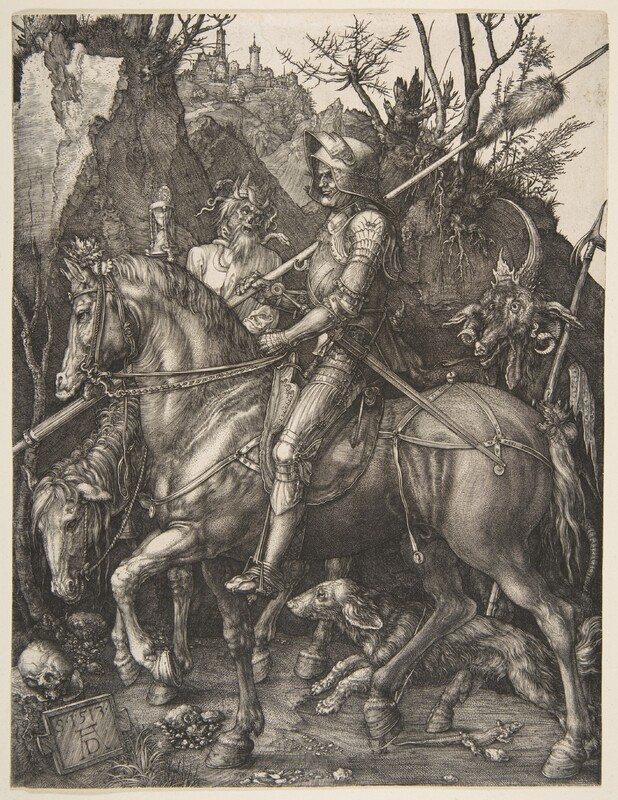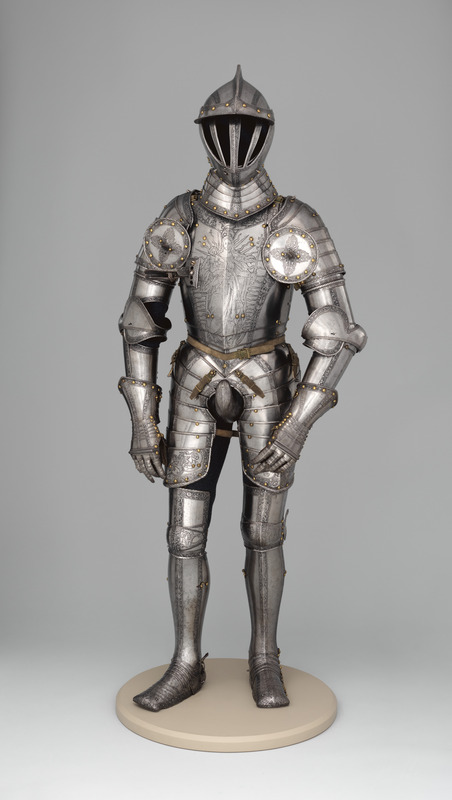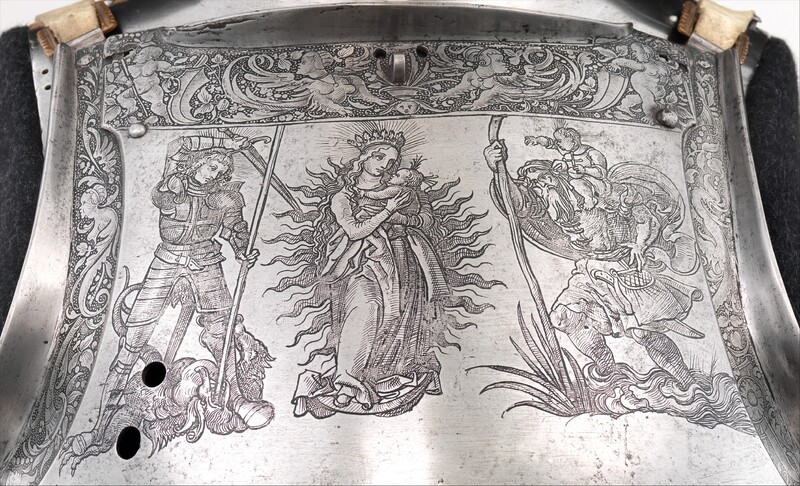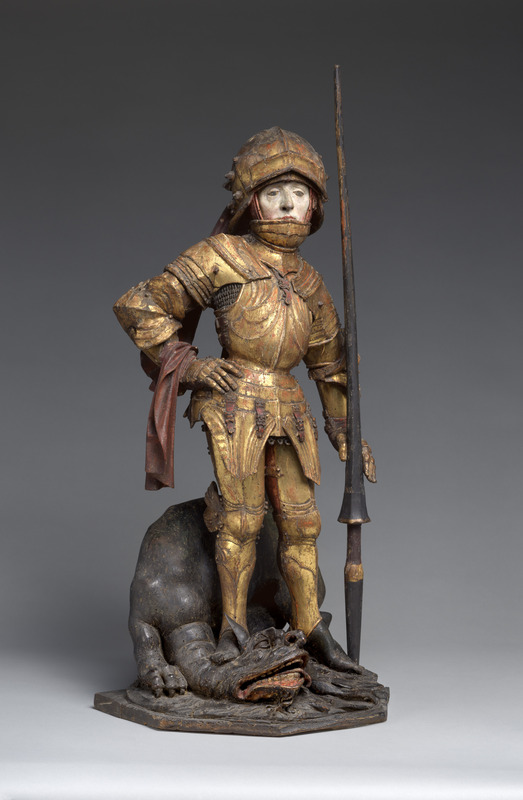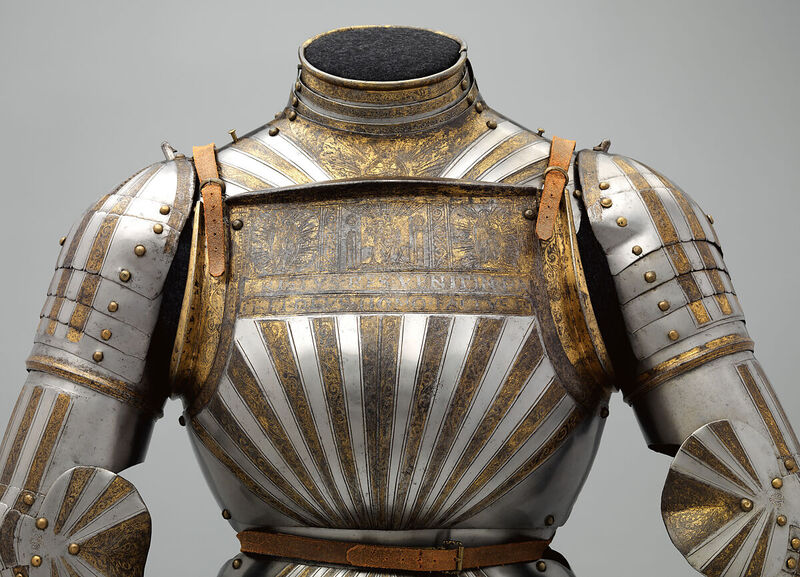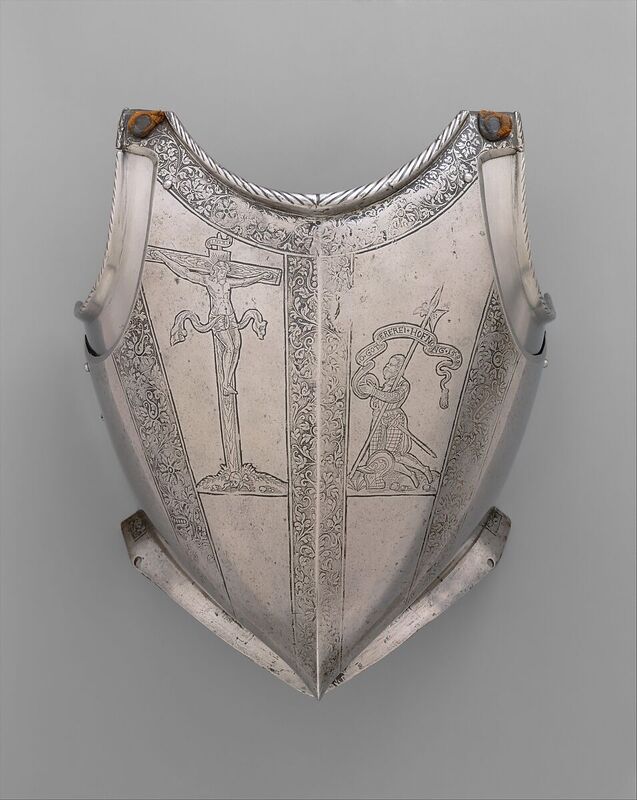Christ on The Battlefield
"Put on the whole armour of God, that ye may be able to stand against the wiles of the devil... Wherefore take unto you the whole armour of God, that ye may be able to withstand in the evil day, and having done all, to stand. Stand therefore, having your loins girt about with truth, and having on the breastplate of righteousness; And your feet shod with the equipment of the gospel of peace: Above all, taking the shield of faith, wherewith ye shall be able to quench all the fiery darts of the wicked" -St Paul to the Ephesians 6:11– 17 KJV
Similarly to the origins of armor and its connections to masculinity, the rigorously Christian roots of knightood constructed during the Middle Ages led to a Renaissance understanding of knighthood which was deeply connected to Christianity. For a knight, the regular observance of Christian practice was particularly important, as there was no other role which required both the body and soul to be so prepared for the possibility of death.
Albrecht Dürer's sixteenth century engraving Knight, Death, and the Devil offers a visual illustration of this understanding of a knight's life as one haunted by death and shaped by Christian ideals. This symbolic reading is displayed as Dürer's knight rides steadfastly past both death and the devil representing his dedication to both faith and his knightly duties. These foundations of knigthood alongside the increasingly advanced nature of body armor decoration led Renaissance knights to symbolically engage with fears of vulnerability and imperfection through the engraving of Christian religious imagery. When utilized on armor, these images worked to sanctify the body and symbolically align a knight with pain, vulnerability, and martyrdom.
One way this connection manifested was the production of armor engraved and inscribed with Christian references which acted as protective talisman and sacralized the bodies that wore them. Due to the sacralizing nature of Christian imagery engravings such as the Father, Son, and Holy Spirit trinity, the Virgin Mary and Christ Child, martyr saints, and the crucifixion, a Renaissance condottiere could effectively transform his body into a sacred space. Both the Armor of Emperor Ferdinand and the German cuirass exist as examples of this armor which include etchings of these Christian saints. On the armor of Emperor Ferdinand is etched a large scene of the Virgin and Christ Child, and the German cuirass features Saint George, the Virgin Mary and Christ Child, and Saint Christopher, depicting how these scenes were proudly located on central parts of the body.
The sacralization provided by these images is then emphasized by the cultural understanding of a knight’s life as one dedicated deeply to God, taking up arms only in His name for His cause in the hopes of salvation. Working in conjunction with the increasingly flexible understandings of sacred space in Renaissance Europe which saw spaces outside of religious architecture able to be considered sacred or sacralized, this religious dedication worked to further cement the knight’s body as a dedicated site of religious sanctity.
These religious engravings further worked to align the knight’s body with sacrifice for the sake of repentance and salvation. As formerly mentioned, Christian martyr saints such as Saint Sebastian, Saint George, and Saint Christopher were common motifs found on Renaissance armor.
This ornamentation of martyr Saints reflects a cultural recognition and active attempt to visually cement the connections between knight’s engaging in battle and death in the name of God and the martyr saints who did the same. This alignment with martyrdom establishes a relationship between a knight and bodily pain which asserts its central Christian role of achieving salvation and thus results in the acceptance and even welcoming of pain in the hopes of repentance and salvation.
